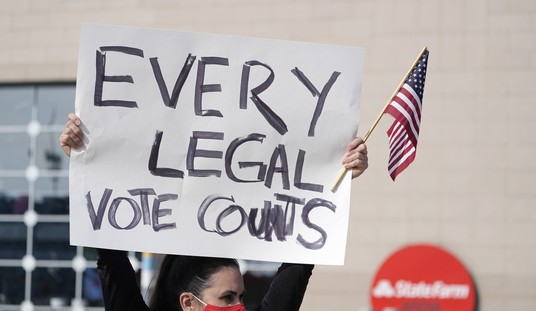In Elkhart, Ind., on Monday, President Obama spoke as if America were approaching a doomsday that only a massive increase in government could avert.
"The situation we face could not be more serious," he said. "We have inherited an economic crisis as deep and as dire as any since the Great Depression. Economists from across the spectrum have warned that if we don't act immediately, millions more jobs will be lost, and national unemployment rates will approach double digits. More people will lose their homes and their health care. And our nation will sink into a crisis that, at some point, we may be unable to reverse."

Do we really face the possibility of an irreversible crisis? Well, yes. Not the one Obama describes, but the one he may cause.
Forget, for a moment, the economic weathermen forecasting the economic equivalent of global warming. Look instead at the historical data.
Claims Obama, "We have inherited an economic crisis as deep and as dire as any since the Great Depression."
But the historical figures for the Gross Domestic Product, calculated by the U.S. Bureau Economic Analysis, say something else.
After growing by 0.9 percent and 2.8 percent in the first two quarters of 2008, GDP declined by 0.5 percent and 3.5 percent in the third and fourth quarters of the year.
Is that "an economic crisis as deep and as dire as any since the Great Depression"?
Well, 1949 was far worse. GDP declined by 5.8 percent in the first quarter of that year and 1.2 percent in the second. It rebounded by 4.6 percent in the third, but then dropped 4 percent in the fourth.
America did not start an irreversible decline that year. In 1950, the economy grew by an amazing 17.4 percent in the first quarter, 12.5 percent in the second, 16.6 percent in the third and 7.5 percent in the fourth.
In 1953-54, there was also a downturn worse than the one Obama "inherited." GDP declined by 2.4 percent in the third quarter of 1953, by 6.2 percent in the fourth quarter and by 2 percent in the first quarter of 1954.
Recommended
Did Leave-it-to-Beaver America spiral into a Steinbeckian Dust Bowl? No. The economy headed back to double-digit growth, expanding by 0.4 percent in the second quarter of 1954, 4.5 percent in the third and 8.2 percent in the fourth. In the first quarter of 1955, it jumped 12 percent.
Something even more dramatic happened in 1957-58. In the fourth quarter of 1957, GDP declined by 4.2 percent, and in the first quarter of 1958, it declined by 10.4 percent.
If President Obama is warning of a potential economic Doomsday following a quarterly GDP declined of 3.5 percent, what would he have said were he president in the first quarter of 1958, when GDP declined by three times that much?
After the 10.4 percent GDP drop of early 1958, of course, Americans started growing their economy again. GDP expanded by 2.4 percent in the second quarter of 1958, 9.6 percent in the third and 9.5 percent in the fourth. In the first quarter of 1959, it grew 7.9 percent, and in the second quarter it leapt 10.9 percent.
Similar cycles happened in the mid-1970s, and in the early 1980s -- with the economy contracting more than it did in 2008, then coming back with robust growth.
In the third and fourth quarter of 1974 and the first quarter of 1975, GDP declined by 3.8 percent, 1.6 percent and 4.7 percent. In the next four quarters, it grew by 3 percent, 6.9 percent, 5.4 percent and 9.3 percent.
In the fourth quarter of 1981 and first quarter of 1982, GDP declined by 4.9 percent and 6.4 percent. In second quarter of 1982, it grew by 2.2 percent, but then the economy hiccupped with a 1.5 percent decline in the third quarter.
But it should be no surprise what happened next: Over the subsequent three quarters, GDP grew 0.4 percent, 5 percent and 9.3 percent -- and it kept growing all the way through the second quarter of 1990.
It is a historical fact that America's free market economy goes through cycles of growth and contraction that run on a consistently long-term upward track.
Jennifer Loven, White House correspondent for The Associated Press, pointed this out in the first question of Monday's press conference.
"Can you talk about what you know or what you're hearing that would lead you to say that our recession might be permanent, when others in our history have not?" said Loven. "And do you think that you risk losing some credibility or even talking down the economy by using dire language like that?"
In fact, talking down the economy serves Obama's purposes. It helps sell his agenda for massively increasing government.
And it could be a self-fulfilling prophecy: America's economy has grown in the past because the American people have not been overburdened by government. Obama could cause irreversible decline by creating an unsustainable government.

























Join the conversation as a VIP Member